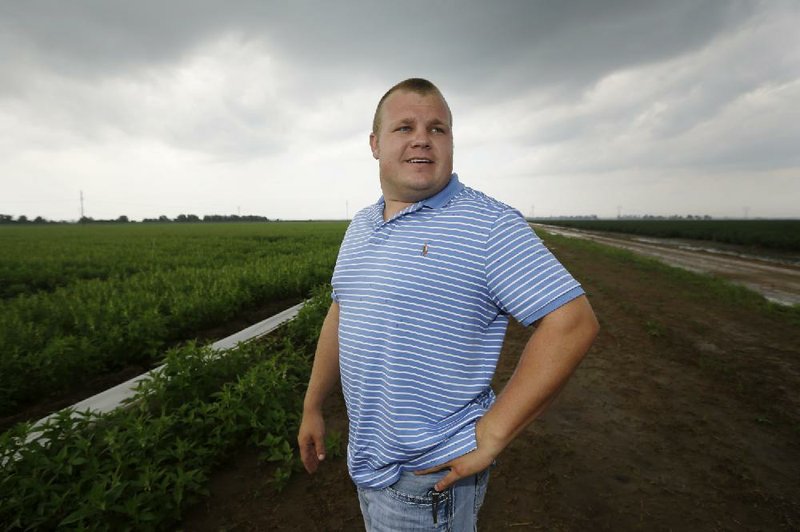LAKE CITY -- Sesame is gaining a foothold in parts of the southeastern United States, where cotton has long been king, as farmers in Arkansas and elsewhere take advantage of its drought tolerance and a recently developed trait that lets them harvest it with typical agriculture equipment.
Thousands of acres from Arkansas to Florida and Georgia were planted with sesame this year -- sometimes joining a rotation of cotton, soybeans and corn -- and at times in fields far away from irrigation lines.
"It's just a tough plant" that endures through a variety of conditions, said Seth Towles, who has 160 acres of sesame growing in a field across a dirt road from his cotton crop.
The nation's traditional sesame-growing region is in Oklahoma and Texas west of Interstate 35. It yields between 350 and 850 pounds per acre each year, said Erick Scott, a territory agronomist for Texas-based Sesaco Corp., which promotes the crop and develops new strains. The problem is the area gets only 16-20 inches of precipitation per year.
"They get rain, but not at the right time," said Scott, who is from Memphis.
But in the Southeast, where rainfall can exceed 50 inches annually, sesame flourishes.
The crop isn't likely to supplant cotton or other primary crops in the Southeast -- 30,000 to 40,000 acres pales to the millions of acres planted in cotton, beans, milo or corn, according to the University of Arkansas Cooperative Extension Service. It could, however, help farms that don't have irrigation lines in every field, Scott said.
"It costs about $160 an acre to raise sesame," Towles said. That's compared with about $650 for cotton and $350 for soybeans.
Matching his yield last year -- 960 pounds per acre -- at last year's price of about 42 cents per pound would earn him $400 per acre before expenses.
One problem with sesame seedpods is that they split open shortly after maturity and spill 50-80 seeds onto the ground.
So, during the past 10 years, Sesaco has introduced a number of plants with shatter-resistant pods, letting farmers leave sesame plants in the field while they harvest more weather-sensitive crops. Later, farmers can adjust their combines to strip sesame plants of the hardy pods, keeping the seeds whole to protect the oil inside.
David Hodges of Jonesboro grew sesame last year, but his crop rotation didn't leave him any space for it this year.
He predicts it won't be much more than a niche crop in Arkansas, and this year's cool, wet weather could chase farmers away from it.
"If there's a bad year, that may be the death of it. If it's successful, it may go forward," Hodges said. "It's good where there are a lot of wildlife areas, where they have bad deer pressure. Deer don't like it."
The U.S. grows only 3 percent to 5 percent of the world's sesame, Scott said. Sesaco is the primary producer domestically and ships some of its crop overseas.
Seeds in Arkansas typically go to a Sesaco collection point, then to processors that compress them for oil or dry them for use as a food additive or condiment. They are a base ingredient for tahini or on buns.
"We just tell everybody, 'Eat hamburgers,'" said Scott Towles, Seth's father.
Seth Towles harvested last year's crop around Thanksgiving, but he noted that he didn't spend as much time fertilizing or irrigating the crop, as he does cotton or beans.
It was a nice contrast to "trying to fight cotton all year long," he said.
Scott believes Arkansas will be competitive with the traditional sesame-growing areas.
"You can mess it up and still make 800 pounds. It's a forgiving crop," he said.
A Section on 08/31/2014

